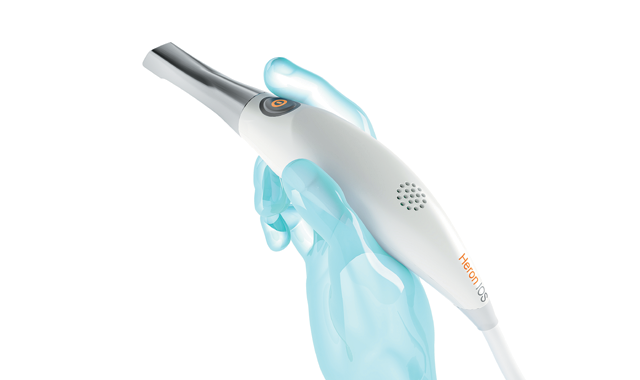Using the Heron IOS to improve the patient experience
A look at the technology behind this intraoral scanner and how it’s enabling practices to be more efficient.

3DISC aims to make dentists’ offices more efficient and more enjoyable for the patient with their new intraoral 3D scanner, the Heron™ IOS. Its goal is to provide great image quality for dentists while saving them time and money. The Heron completes a full arch scan in a couple of minutes, eliminating the traditional system of taking a mold.
The Heron’s lightweight design and ability to update in real-time makes it an essential part of the modern-day dentist practice. We talked to 3DISC’s CEO and Executive Chairman Sigrid Smitt Goldman about its two-year process and to find out why this new tool is the first step in making digital impressions the new standard.
What influenced the development of the Heron™?
We looked at the landscape that was out there. We felt like there was product falling into two different groups. We had some products out there where the image quality wasn’t what it needed to be, so that’s something we put a lot of work into.
Read more: New intraoral scanner challenges the dental market in 2017
Then, we looked at some of the products that were out there that did produce some pretty good images, but that were ergonomically- and design-wise not super great. Those handsets were very large, heavy and cumbersome to use. We set out to create something that was much more lightweight and would fit your hand as a dentist much more easily. We went through a pretty rigorous industrial design process; we did several focus groups and worked with dentists to discover what their preferences were to wrap that great image quality with something that would work well for dentists.
We ended up with a design that dentists could instinctively pick the device up either backward or in a pen grip.
How long has the Heron been in development?
It falls into different phases. The first part, which is developing the actual technology you’re going to use - cameras, mirrors, electronics, all of that - has been going on for almost two years. The industrial design process, where you take that technology and wrap it in a shell, was a six-month process. You kind of have to develop the insides before you can wrap it.
Why should practitioners invest in the Heron?
The Heron is designed to be the ‘smart choice’ for the modern dental practice new to digital dentistry - a turnkey scan and digital design solution with an open format for the widest integration possibilities. For the practitioner who mainly does basic restorations and a limited amount of impressions per month, with an equal basic need, we’ve created a scanner that fully covers all the necessary features and restorations. It’s reliable, covering all basic needs in digital dentistry. And the customer can rely on the fact that 3DISC, with our expertise and continuous product development, will work to secure their investments through a product philosophy based on reliability and flexibility.
What can the Heron offer practitioners that other intraoral 3D scanners cannot?
This handheld scanner is challenging the market with its simplicity and ease of use, a small, lightweight hand and mouth piece, and rotatable tip. It’s a small, lightweight intraoral scanner combined with our Quantor™ software packages that supports all stages of the dental restoration workflow, including order management, scanning, validation, commenting and order submission. It’s an all-in-one application accessible from one interface - a truly open solution with the market’s best optioned CAD integration.
Trending article: What digital dentistry means for implants
Where do you see digital impressions going in the future?
I think they’ll become the standard. Ten years from now we’ll look back and say, ‘I can’t believe we ever did the mold thing, that’s crazy.’
When do you think digital impressions will be able to be used for every case?
That’s difficult to say. There’s a learning curve for dentists and dental hygienists to get on board and become proficient with these devices to the point where it is faster and easier for them than it would be to do a mold, which is something they’ve been doing all of their lives.
Definitely there’s a way to go before we’re all digital. But I think it is a transition that is happening. I would think by 10 years from now everyone will be doing digital.